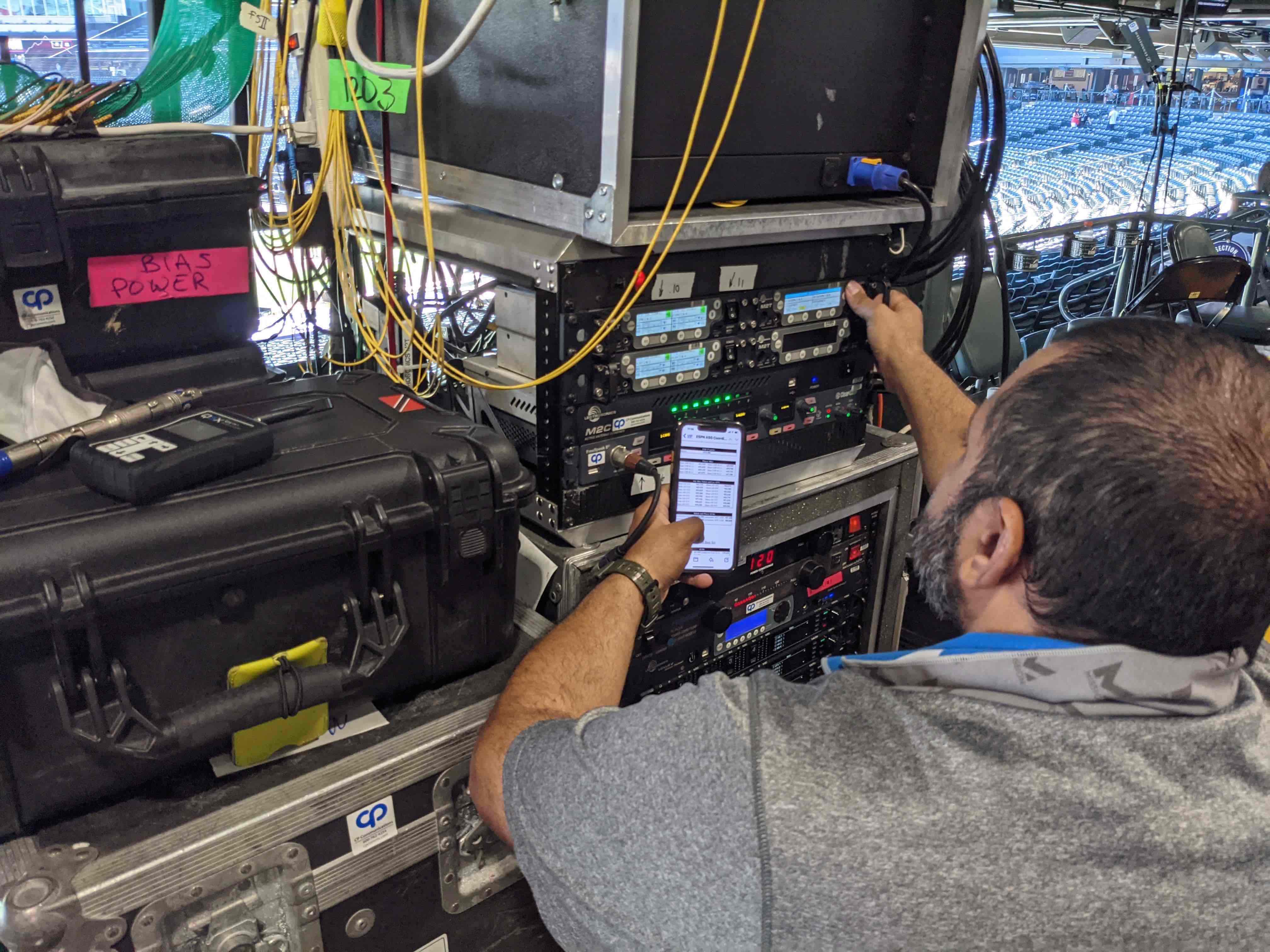CP Communications Overcomes Spectrum Shortage At Major Events Despite Repack
The degree of difficulty depends on the location and number of spectrum users

ST. PETERSBURG, Fla.—While the FCC repack of the TV band saw about 1,200 full-power television stations affected and a reduction of spectrum available for wireless mic and other RF communications production uses, CP Communications has been able to overcome challenging conditions, such as those associated with the MLB All-Star Game.
Making frequency coordination of the game particularly challenging was the fact that so many events and networks were involved. This stands in contrast to ABC’s coverage of the NBA Finals in Milwaukee and Phoenix where there were far fewer coordination issues to overcome, the company said.
“Every time you add a network, you add more RF,” said Loren Sherman, RF coordinator and field technician. “That made the All-Star Game a little more difficult to coordinate.”
When responsible for RF coordination of wireless video and audio transmission, CP assigns various RF users to specific frequencies within available spectrum for the duration of an event. The purpose is to avoid interference with established spectrum users in the area, such as broadcast stations, as well as other temporary spectrum users that cover the event, the company said.
“I think what makes us unique, unlike most frequency coordinators, is that we also operate the gear,” Sherman explained. “We’re not just passing out a number and giving it to people. We understand how the gear operates, so we provide frequencies where the gear can work harmoniously with other pieces of gear. We’re one of the few that do both and we do both well.”
CP technicians coordinate RF frequencies with specialized software while working closely with venue and local SBE coordinators. The biggest challenge it faces is finding enough spectrum, especially since the repack. To accommodate all media clients during high-profile events, CP relies on receiving special temporary authority (STA) from the FCC to use parts of the spectrum that are not normally available.
“If we’re going to use STAs, then we need time,” Sherman said. “We might start planning for something like the Super Bowl a month or two in advance, depending on how many two-way radios we need to coordinate everything.”
The professional video industry's #1 source for news, trends and product and tech information. Sign up below.
While RF coordination is similar for indoor and outdoor events, Sherman said he can usually get more frequency options in an indoor venue.
“The venue will often provide protection from digital television stations,” he said. “Maybe they’ll attenuate that signal enough that it becomes a usable piece of spectrum inside that building. But outside, it is what it is.”
Different outdoor locations yield different results. Denver was “fairly difficult” to coordinate based on the number of DTV signals in the region, Sherman said. In contrast, Milwaukee has fewer DTV stations and limited interference with signals from nearby cities.
More information is available on the company’s website.
Phil Kurz is a contributing editor to TV Tech. He has written about TV and video technology for more than 30 years and served as editor of three leading industry magazines. He earned a Bachelor of Journalism and a Master’s Degree in Journalism from the University of Missouri-Columbia School of Journalism.

